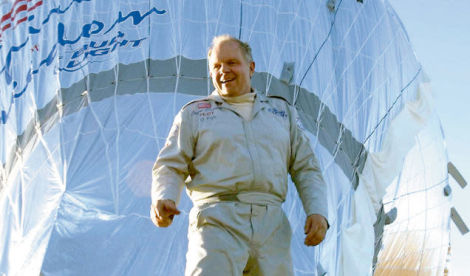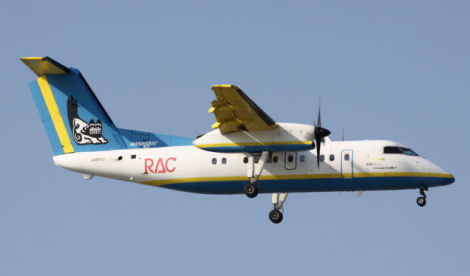Welcome to This Date in Aviation History, getting of you caught up on milestones, important historical events and people in aviation from June 19 through June 21.

June 19-20, 1944 – The Battle of the Philippine Sea. The use of the airplane in warfare began in WWI, and by WWII it had become a formidable weapon. The Japanese demonstrated the enormous power of carrier-based warplanes with the surprise attack on Pearl Harbor, and the ensuing Battle of the Coral Sea and Battle of Midway showed that the airplane had finally replaced the battleship as the center of power in the modern battle group. In both battles, no two surface ships ever fired a shot at each other, and Midway proved to be a turning point in the Pacific War, with a decisive American victory finally putting the brakes on what had been a relentless Japanese advance. The initiative had finally turned to America and her allies. Even though Japan had lost four carriers, Japanese naval aviation wasn’t utterly destroyed, though it was severely hobbled. There remained one more epic carrier battle to be fought, and the Battle of the Philippine Sea, the largest carrier battle in history, proved to be the last gasp for Japanese naval air power in WWII.
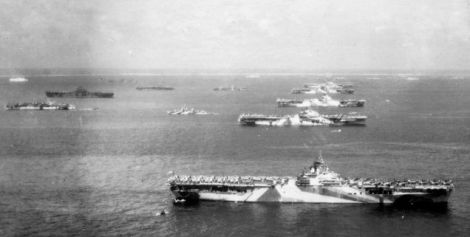
In the summer of 1944, American forces launched operations as part of their island hopping campaign to take the Japanese-held islands of Tinian, Saipan, and Guam in the Mariana Islands. The Japanese, despite their losses at Midway, were still able to assemble a fleet that included five heavy carriers and four light carriers, five battleships, 11 heavy cruisers, two light cruisers and 28 destroyers to contest the American advance toward the Japanese homeland. To counter the Japanese fleet, the Americans had Task Force 58, one of the most powerful armadas ever assembled. Under the command of Admiral Marc Mitscher, TF 58 included seven heavy carriers, eight escort carriers, seven battleships, eight heavy cruisers, 13 light cruisers and 69 destroyers. On June 16, a US submarine discovered the Japanese fleet off the coast of the Philippines as they turned to face the Americans. Mitscher divided his fleet into four carrier task groups and one battleship task group, while the Japanese divided their fleet into four groups based around their carriers.
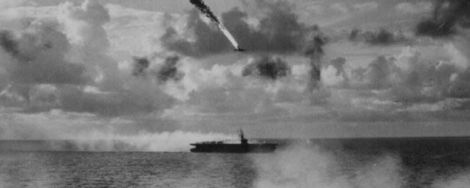
Japanese scout planes spotted the American fleet on the morning of June 19 and launched the first attack. However, American radar detected the planes 50 miles away from the fleet, and American fighters were waiting for them when they arrived. In the ensuing battle, more than 200 Japanese planes were shot down against the loss of only 23 US aircraft. Meanwhile, US submarines had located the main body of the Japanese fleet. First, the carrier Taihō was struck with torpedoes, and then the carrier Shōkaku, which sank four hours later. The Japanese attacked again, but the planes flew in the wrong direction. Nevertheless, the attackers were detected and annihilated by American fighters.
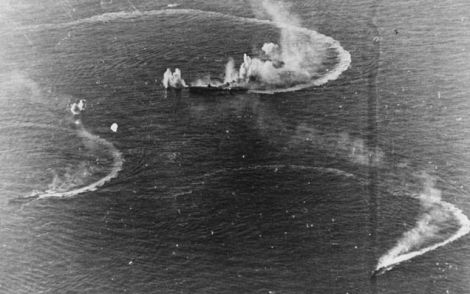
By the end of the battle on June 20, roughly 600 Japanese aircraft had been destroyed, earning the battle the nickname “The Great Marianas Turkey Shoot.” Along with the loss of aircraft, the Japanese Navy lost three carriers and an estimated 3,000 dead. The Americans suffered one damaged battleship, 123 aircraft lost, and 109 dead. Though it might have been possible for the Japanese to replace their aircraft, the losses in experienced pilots was a blow from which they would never recover. Even though Japan still had carriers, they no longer had the men or planes to operate effectively from their decks, and the once-proud ships were reduced to the role of a diversionary force four months later in the Battle of Leyte Gulf, which resulted in another decisive victory for the US and her allies.
Short Takeoff
June 19, 2002 – Adventurer Steve Fossett takes off on the first solo balloon circumnavigation of the Earth. Fossett departed from Northam, Western Australia on June 19 in a balloon named Spirit of Freedom, and flew eastward across the Pacific Ocean, over Chile and Argentina, then across the southern Atlantic Ocean to South Africa and then across the southern Indian Ocean, arriving back in Australia on July 4. The flight covered 20,626 miles and set numerous distance and flight longevity records. Fossett made other world record flights, including the first solo, nonstop circumnavigation of the Earth in the Virgin Atlantic GlobalFlyer. Fossett died in the crash of his private plane on September 3, 2007.
June 20, 1983 – The first flight of the Bombardier Dash 8, the first in a series of twin-turboprop, medium-range airliners that were originally known as the de Havilland Canada (DHC) Dash 8. Developed from the four-engine DHC Dash 7, the Dash 8 is built in four variants capable of accommodating from 39-78 passengers. It entered service in 1984 with the now-defunt NorOntair airline, and was extremely successful as a regional airliner. Despite challenges from newer small regional jets, the lower operating costs of the turboprop engine on shorter flights at lower altitudes have allowed the Dash 8 to remain competitive. The Dash 8 remains in production, and nearly 1,200 have been built to date.
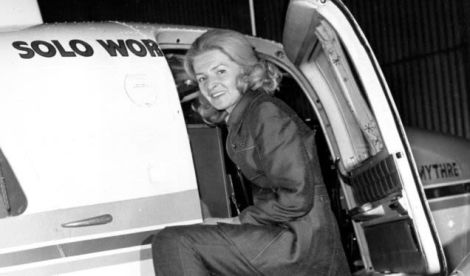
June 20, 1966 – Sheila Scott completes the first of three circumnavigations of the globe. Born on April 27, 1922 in Worcester, England, Scott was a record-setting aviatrix and made her first round-the-world flight in a Piper Comanche 260B. Departing from London Heathrow on May 18, she flew approximately 31,000 miles over the course of 34 days and 189 flying hours. Scott topped that in 1971 with a “world and a half” flight of 34,000 miles, becoming the first person to fly over the North Pole in a single-engine aircraft. She was awarded the Order of the British Empire in 1968 for her exploits, and died in 1988 at the age of 66.
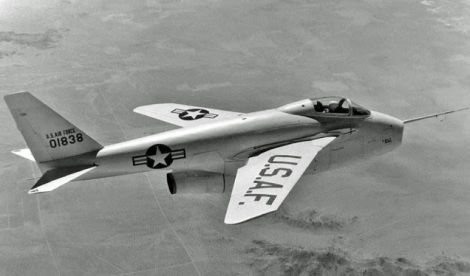
June 20, 1951 – The first flight of the Bell X-5, an aircraft that was inspired by the variable-sweep wing Messerschmitt P.1101 and the first aircraft that was capable of changing the angle of wing sweep in flight (the wing sweep of the P.1101 could only be changed on the ground). The X-5 had three settings for the wings, and a full sweep could be accomplished in 30 seconds. However, the aircraft was so unstable that the second prototype was lost in a crash which killed its test pilot. While the X-5 was ultimately a failure, data on swing-wing technology would be used successfully on later production aircraft such as the General Dynamics F-111 Aardvark, the Grumman F-14 Tomcat and the Rockwell B-1 Lancer bomber.
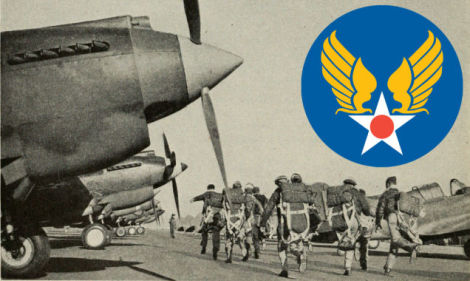
June 20, 1941 – The United States Army Air Forces is created. The US Army Air Forces (USAAF) was the successor to the US Army Air Corps (USAAC, 1926-1941) and the US Army Air Service (USAAS, 1918-1926). The USAAF formed one of three distinct components of the US Army, the others being the Army Ground Forces and the Army Service Forces. The USAAF combined disparate aviation organizations under a single command, which reported to the Army Chief of Staff. The USAAF witnessed extraordinary growth during the Second World War, and boasted 2.4 million personnel and more than 80,000 aircraft by 1945. Drastic cuts in personnel and materiel following the war saw the USAAF dwindle to just 304,000 airmen and less than 30,000 planes. Based on the recommendation of President Harry Truman, Congress passed the National Security Act of 1947 which created the Department of the Air Force, and the USAAF became the United States Air Force on September 18, 1947.
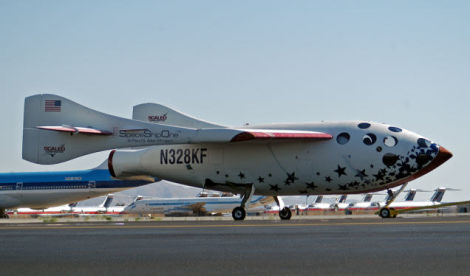
June 21, 2004 – SpaceShipOne makes the first privately-funded human spaceflight. SpaceShipOne is an experimental air-launched, rocket-powered spacecraft that is capable of suborbital flight. Designed by Burt Rutan and built by his company Scaled Composites, SpaceShipOne was the first step in a program to take paying passengers into space, and served as proof-of-concept for the larger SpaceShipTwo which first flew in 2010. SpaceShipOne was dropped from the Scaled Composites White Knight mothership, and uses a unique feathering system that raises the aircraft’s tail boom to slow the ship during reentry. With the successful flight, the design team won the $10 million Ansari X Prize by reaching an altitude of 100 km twice within a two-week period. SpaceShipOne made 17 test flights, three of which went beyond 100 km in altitude, and the hybrid aircraft/spacecraft is now preserved at the National Air and Space Museum in Washington, DC.
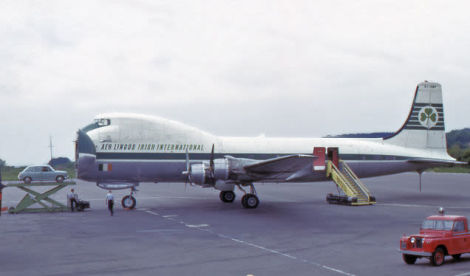
June 21, 1961 – The first flight of the Aviation Traders Carvair, an aircraft developed from the Douglas DC-4 by entrepreneur Freddie Laker to allow travelers to take their cars with them on holiday. The DC-4 was modified by placing the flight deck in a raised section above the main fuselage to provide room for five cars and 22 passengers, or three cars and 50 passengers. The flexible design of the Carvair meant that the configuration could be changed on the ground between flights in as little as 40 minutes. A total of 21 DC-4s were converted and flown by various airlines in Europe, and one remains in service, based in Denton, Texas, which set a world record in 2005 when it carried 80 skydivers aloft.
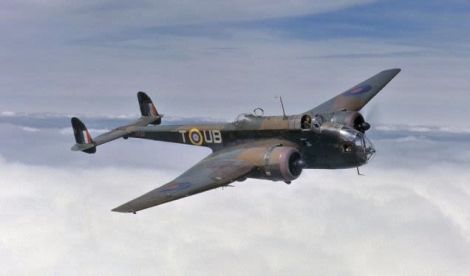
June 21, 1936 – The first flight of the Handley Page Hampden, a twin-engine medium bomber flown by the Royal Air Force in the early part of WWII. The Hampden entered service with two other early bombers, the Armstrong Whitworth Whitley and Vickers Wellington, though it was the first of the trio to be retired. The Hampden was known as the “flying suitcase” by its crews due to its cramped fuselage, and it carried out the majority of the bombing missions early in the war, and also took part in the so-called “1000 Bomber Raids” against Germany. Though considered modern when it was first built, the Hampden was quickly outclassed by newer designs, and was briefly relegated to night fighter duties before being retired in 1943. A total of 1,430 were produced from 1936-1941.

June 21, 1913 – Georgia “Tiny” Broadwick becomes the first woman to parachute from an airplane. Tiny Broadwick (neé Thompson), so named because of her small stature and 85-pound weight, was the adopted daughter of pioneering parachutist and showman Charles Broadwick. Tiny joined Broadwick’s troupe of aerial performers at the age of 15, and was billed as the “Doll Girl.” She began her career by parachuting from balloons before making her first jump from an airplane piloted by Glenn L. Martin. Though June 21 is recognized as the date of her first jump, she had made two prior jumps during a flight exhibition in Chicago the previous year. While demonstrating a static line jump for the US Army, Broadwick’s line got tangled in the aircraft and she had to cut herself free. Later jumps were made without a static line, making her the first person to perform a free-fall parachute jump. Broadwick retired in 1922 after making 1,100 jumps, and died in 1978.
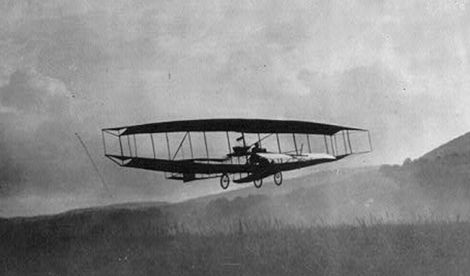
June 21, 1906 – The first flight of the AEA June Bug. The Aerial Experiment Association (AEA) was founded by Scottish inventor Alexander Graham Bell to further the study of aeronautics and aircraft design. One of its members, American Glenn Curtiss, became a principal rival of the Wright brothers and the man credited with creating aircraft production in America. The June Bug was an aircraft of Curtiss’ own design and, with most of the Wright’s work being carried out in secret, it made the first public flight in the United States with Curtiss at the controls. (One significant difference between the June Bug and the Wright Flyer was that Curtiss’ design took off under its own power, while the Flyer relied on a catapult.) On July 4, 1908, Curtiss won the Scientific American Trophy and its $2,500 prize by completing a flight of 5,080 feet in distance, cementing Curtiss’ place in the pantheon of American aviation pioneers.
Connecting Flights
If you enjoy these Aviation History posts, please let me know in the comments. And if you missed any of the past articles, you can find them all at Planelopnik History. You can also find more stories about aviation, aviators and airplane oddities at Wingspan.
